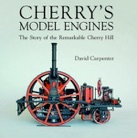Everybody thinks they know what wrought ironwork is. As far as they are concerned it’s curlicues, or maybe even scrolls, arc welded into a frame to keep their dog in or the neighbour’s dogs out, or both. As I explained before, I set out to make ironwork to the constructional methods and standards of design and workmanship of the master smiths of the past, so every cold bent crudely formed ‘scroll’ casually arc welded into place offends me. That’s why what I saw at the 1980 Conference so excited me. There were blacksmiths designing work AROUND modern equipment, power hammers, arc welders, grinders, oxy-propane and acetylene torches, plasma cutters, indeed anything that helped them to realise brand new design ideas, ideas where the arc welder in particular had an integral and proper place. Hence old design principals and modern methods could be brought together to create a whole new genre of decorative ironwork.
Attending Blacksmiths Association (BABA) conferences every year, and reading the latest books from Germany and the USA brought me into contact with all the latest design ideas which led to me starting to put pencil to paper to incorporate my fascination with the plastic properties into saleable items, as illustrated in Blackstyx 2. The work of the Germans particularly interested me, their maintenance of formal apprenticeships had resulted in the continuing importance of ironwork in architecture and there was a vibrant industry in place that fed the creative abilities of a lively body of fine craftsmen.
Reading an arts magazine in 1984 I saw an announcement inviting applications for the 1985 Winston Churchill Travelling Fellowships. Briefly, the Trust, www.wcmt.org.uk, provides funds for people to travel abroad to see what people overseas are doing in their area of special interest, in my case forged ironwork, and so it was that in the April I found myself on a 737 heading for Stuttgart to spend time with my friend Paul Zimmermann, one of West Germany’s leading smiths, for a period of study and work. It was the most intense learning experience of my life and I came back fired up with ideas and enthusiasm and with a new way to design and draw, something that I had always found difficult.
If you can draw well it gives you confidence in your ideas and improves your chances of securing commissions. Following on the heels of that experience came the BABA conference in August and I came away from that as Chairman which led to two extremely busy years, much of which was devoted to organising the next conference in 1987. That was a great success with some of the best overseas smiths giving demonstrations, all washed down with the usual amounts of beer and good cheer.
It was all very exciting, and over the years blacksmithing took me to Russia, Ukraine, Germany, France, Israel, and the U.S.A. twice. Running a forge single handed is hard work, but he following is a selection of the major commissions I completed over the years.
Of them all, the one of which I am most proud is the Royal Anniversary Fire Irons. This was a competition to make a set of fire irons to celebrate the anniversary of Her Majesty’s accession to the throne in 1952, and I won. I went with my family to St. James’s Palace to present them to her – 5 days after the fire at Windsor Castle, dare we utter the word ‘fire’? They are now at Sandringham where she has the pleasure of using them every Christmas. I hope you have found my account interesting and will look at the products of this great craft, both historical and contemporary, with new eyes.



















